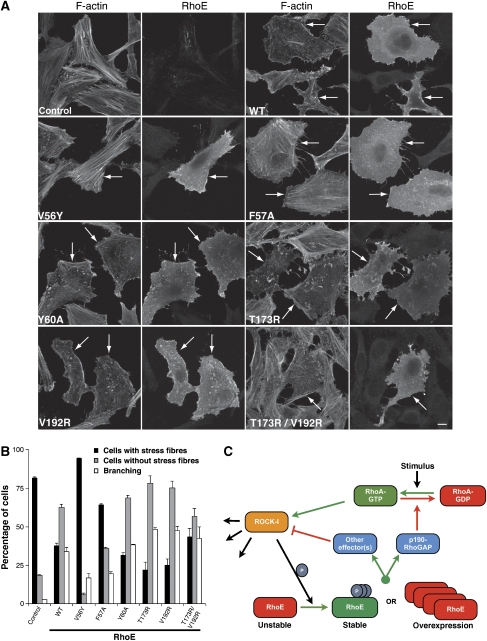Figure 7.
Effect of RhoE mutants on the actin cytoskeleton. HeLa cells were transfected with the indicated FLAG–RhoE wild-type (WT) and mutant constructs, or with empty vector (control). After 24 h, cells were fixed and stained for actin filaments and with anti-FLAG antibody. (A) Representative images of transfected cells. Left panels of each pair of images show actin filaments (F-actin); cells expressing transfected FLAG epitope-tagged RhoE are indicated with arrows, and were identified by staining with anti-FLAG antibody (right panels of each pair, labelled ‘RhoE'). Note that cells expressing transfected RhoE have much fewer stress fibres than surrounding untransfected cells, except for cells expressing V56Y and F57A mutants. (B) Cells expressing transfected RhoE were scored for loss of stress fibres (compared with surrounding untransfected cells) and for rounded, ‘branching' phenotype; 100 FLAG antibody-stained cells were counted on each of three coverslips; mean % of cells in each category ±s.e.m. is shown. Note that the ‘branching' phenotype is a stronger response to RhoE than loss of stress fibres. (C) Model for RhoE and ROCK-I regulation. RhoE exerts negative feedback regulation of ROCK-I. Stabilised RhoE (through RhoA-activated ROCK-I phosphorylation or RhoE over-expression) antagonises RhoA-stimulation of ROCK-I through either activation of p190 RhoGAP or through regulation of an alternative RhoA effector.

